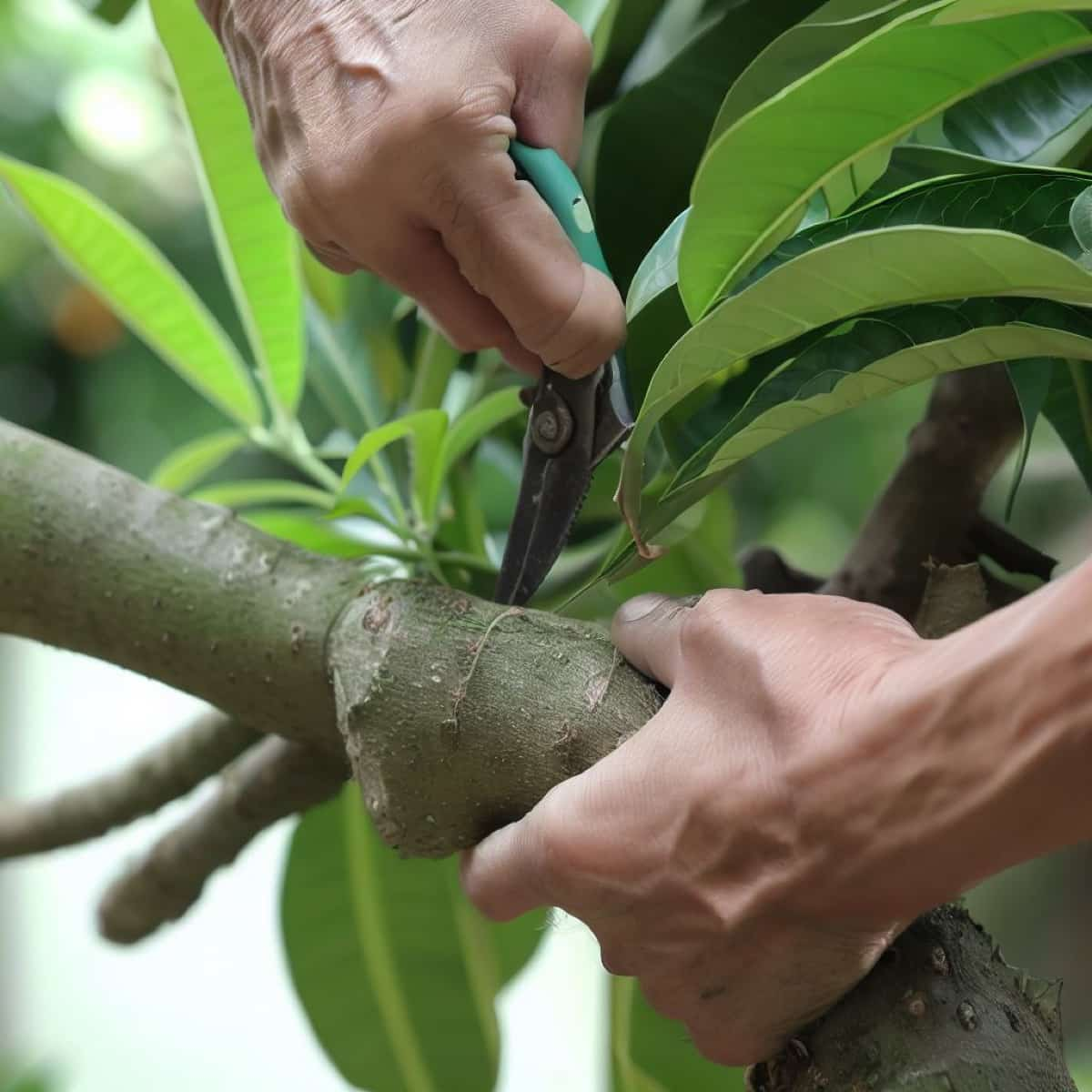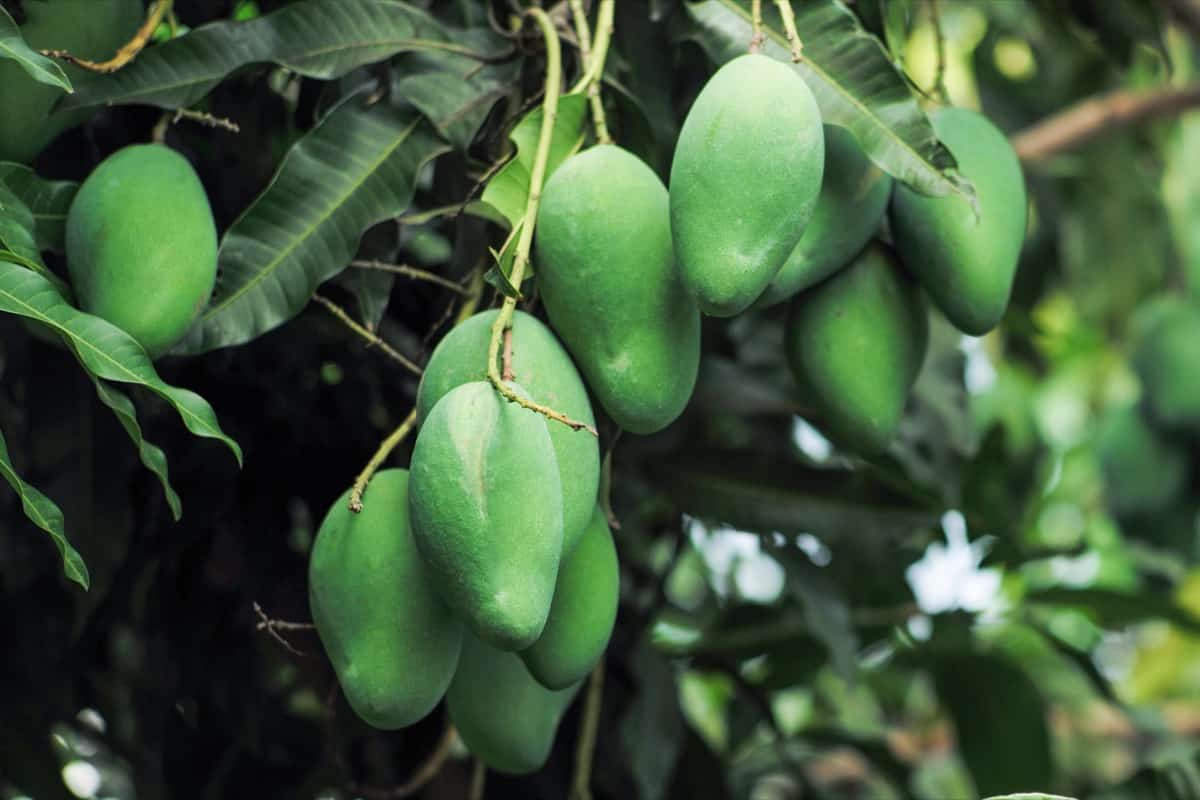Pruning is an essential maintenance practice for maintaining the health and productivity of mango trees. By removing dead or diseased branches, promoting airflow, and shaping the tree, pruning helps to improve fruit production and overall tree vigor. In this guide, we will walk you through the step-by-step process of pruning a mango tree and provide information on when to prune mango trees.

How to Prune a Mango Tree: A Step-by-Step Guide
Tools and Equipment Required for Pruning Mango Trees
- Pruning shears: Also known as secateurs, these handheld tools are used to cut small branches and stems.
- Loppers: These are long-handled pruning shears with a greater cutting capacity, ideal for thicker branches.
- Pruning saw: A saw with a curved blade designed to cut larger branches.
- Pole pruner: This tool consists of a long pole with a pruning saw or lopper at the end, allowing you to reach high branches.
- Safety goggles and gloves: Essential for protecting your hands and eyes from potential injuries.
Identifying the Right Time to Prune Your Mango Tree
It is important to consider the growth pattern and climate to identify the right time to prune. Ideally, pruning should be done during the dormant season, typically in winter. This allows the tree to quickly recover and promotes healthy new growth in spring. However, if your mango tree has diseased or damaged branches, they should be removed immediately, regardless of the season.
Regular pruning also helps in shaping and controlling the size of the tree. Always remember to use proper pruning techniques to promote fruit production and maintain the overall health of your mango tree.
Pruning Techniques for Promoting Fruit Production in Mango Trees
By strategically removing dead or diseased branches, the tree’s overall health and vigor are improved, allowing for better nutrient allocation to the remaining branches. This process also helps prevent the spread of diseases and pests. Another important aspect of pruning is shaping and controlling the size of the mango tree.
The tree’s growth can be managed by selectively cutting back branches, ensuring it doesn’t become too large or unruly. This not only makes it easier to maintain but also enhances sunlight penetration and air circulation, leading to increased fruit production.
Removing Dead or Diseased Branches from a Mango Tree
Dead branches not only detract from the tree’s overall appearance but also pose a risk of falling and causing damage. Diseased branches can spread infections to other parts of the tree, potentially leading to significant damage or even death. When removing these branches, ensure you use clean and sharp pruning tools to make precise cuts. Cut just outside the branch collar, leaving no stubs. Regularly inspect your mango tree and promptly remove any dead or diseased branches to promote its overall well-being.
Shaping and Controlling the Size of Your Mango Tree through Pruning
Selectively removing certain branches can shape the tree’s canopy, encourage lateral growth, and control its overall size. Young mango trees can be pruned to promote a strong and well-balanced structure, ensuring a sturdy foundation as the tree grows. To control the size of the tree, selectively remove vertical branches or branches that are growing too close together.
In case you missed it: How to Increase Mango Flowers: Encouraging Techniques, Tips, and Effective Methods

Pruning should be done during the dormant season to minimize stress on the tree. Remember to use clean and sharp pruning tools and make clean cuts outside the branch collar. With proper pruning, you can shape and control the size of your mango tree, ensuring its health and aesthetic appeal.
Pruning Young Mango Trees for Proper Growth and Development
Pruning young mango trees is essential for their proper growth and development. It helps in shaping the tree and ensuring a strong structure. Start by removing dead or damaged branches. It promotes healthy growth and prevents the spread of diseases. Next, thin out the overcrowded branches to allow sunlight and air circulation.
Be cautious not to remove more than one-third of the tree’s foliage. Lastly, prune any crossing or rubbing branches to prevent future damage. Regularly pruning young mango trees will encourage a balanced canopy and promote the growth of fruit-bearing branches.
Pruning Mature Mango Trees to Maintain Health and Productivity
Pruning mature mango trees is crucial for maintaining their health and productivity. Begin by removing any dead, diseased, or damaged branches. This will stop the spread of diseases and encourage new growth. Next, thin out the canopy to allow sunlight to reach the inner branches. This will promote fruit production and reduce the risk of fungal infections.
Be cautious not to over-prune, as it can stress the tree and reduce productivity. Finally, trim any crossing or rubbing branches to prevent future damage. Regular pruning of mature mango trees will help maintain their overall health and ensure continued productivity.
Common Mistakes to Avoid When Pruning Mango Trees
One of the biggest mistakes is improper timing. Pruning mango trees at the wrong time of year can result in stunted growth and decreased fruit production. It is crucial to prune your mango trees during their dormant period, which is typically in the late winter or early spring. This allows the trees to recover from pruning and encourages new growth before the fruiting season. Another mistake is over-pruning. While it is important to remove dead, damaged, or diseased branches, excessive pruning can harm the tree.
Mango trees need a balance of foliage to produce energy through photosynthesis. Removing too many branches can weaken the tree and reduce its ability to produce fruit. It is recommended to remove no more than 20% of the tree’s foliage during each pruning session. Improper pruning techniques can also lead to mistakes. One common error is making improper cuts. Make clean and 45-degree angled cuts just above a bud or branch collar. This promotes proper healing and reduces the risk of disease or pest infestation.
Additionally, pruning too close to the trunk can damage the tree and inhibit its growth. Lastly, neglecting to use proper tools and equipment can result in mistakes while pruning mango trees. Dull or improper tools can create jagged cuts, which are more prone to infections. Use sharp, clean pruning shears or saws to ensure smooth and precise cuts.
In case you missed it: How to Stop Mango Flower Drop and Fruit Drop: Effective Methods

Conclusion
By following these guidelines on how to prune a mango tree and knowing when to prune, you can maintain a healthy and productive mango tree that yields delicious fruits for years to come.
- Feed Your Flock for Less: Top 10 Tips to Save on Chicken Feed
- Ultimate Guide to Ossabaw Island Hog: Breeding, Raising, Diet, and Care
- Hatching Answers: The Top 10 Reasons Your Chickens Aren’t Laying Eggs
- Eggs and Economics: Breaking Down the Cost of Raising Backyard Chickens
- Defend Your Greens: Proven Methods to Keep Iguanas Out of Your Garden
- Ultimate Guide to Cinnamon Queen Chicken: A Comprehensive Guide for Beginners
- Ultimate Guide to California Tan Chicken: Breeding, Raising, Diet, Egg-Production and Care
- Ultimate Guide to Marsh Daisy Chicken: Breeding, Raising, Diet, and Care
- 10 Types of Chicken Farming Businesses You Can Start for Profits